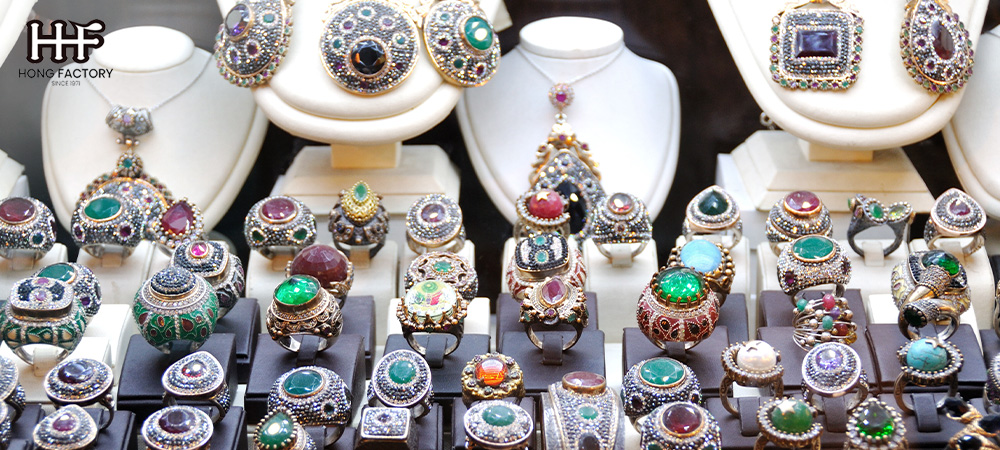Jewelry is often seen as an accessory, a way to enhance an outfit or express personal style. But for Native American tribes, it is so much more than that. Each pieturquoise, silver work, tribal designs, cultural sice of jewelry tells a story, holds cultural significance, and represents centuries of tradition, skill, and artistry. From the shining silverwork to the vibrant turquoise stones, Native American jewelry is emblematic of the deep connection between the artisans, their history, and the land from which it is crafted.
The Art of Silverwork
Silverwork became a defining characteristic of Native American jewelry, particularly among the Navajo, Zuni, and Hopi tribes. The introduction of silver to Native American artisans is often attributed to the Spanish, who brought silver coins and other items with them when they colonized the southwestern United States. However, it was the Navajo who are credited with mastering the metal and transforming it into intricate works of art.
In the late 1800s, a Navajo man named Atsidi Sani is said to have been one of the first Native Americans to learn silversmithing techniques from Mexican artisans. He began crafting beautiful silver jewelry, incorporating tribal designs and symbolism into his work. From there, the practice of silversmithing spread to other tribes, each of which brought its own unique aesthetic and cultural influences to the craft.
The Navajo favored large, bold designs that often featured heavy silverwork, while the Zuni were known for their delicate, precise inlay work. The Hopi tribe developed a distinctive overlay technique, in which one layer of silver is cut into a design and then soldered onto another, creating a striking contrast between polished and oxidized silver.
Silver jewelry became a symbol of status and wealth within Native American communities, but it also became a way for artisans to express their cultural identity and spiritual beliefs. Many pieces were adorned with tribal designs that held deep meaning for the wearer and the community.
The Cultural Significance of Turquoise
Perhaps no other stone is as closely associated with Native American jewelry as turquoise. This vibrant blue-green stone has been used by Native American artisans for centuries and holds profound cultural and spiritual significance.
Turquoise, often referred to as the “stone of life” or the “sky stone,” is believed to have protective qualities. Many Native American tribes, including the Navajo, Hopi, and Zuni, believe that turquoise brings good fortune, health, and spiritual well-being. It is often used in ceremonies and given as a gift to mark important life events, such as weddings or the birth of a child.
The stone itself is found in mines throughout the southwestern United States, particularly in Arizona, New Mexico, and Nevada, where Native American tribes have historically lived. The color of turquoise can range from a light sky blue to a deep greenish-blue, depending on the amount of copper or iron present in the stone. Some tribes prefer specific shades of turquoise, which are thought to have different spiritual properties.
In Native American jewelry, turquoise is often set in silver, creating a striking contrast between the cool blue of the stone and the gleam of the metal. This combination of turquoise and silver has become iconic in Native American jewelry and is perhaps the most recognizable style associated with the craft.
Some of the most popular designs featuring turquoise include squash blossom necklaces, concho belts, and cluster rings. Each of these pieces is not only beautiful but also steeped in cultural significance. For example, the squash blossom necklace, which originated with the Navajo, is believed to represent fertility and protection.

Tribal Designs – Symbols of Identity and Belief
One of the most captivating aspects of Native American jewelry is the use of tribal designs, each of which carries its own meaning and significance. These designs are often inspired by nature, animals, and the cosmos, reflecting the deep connection that Native American tribes have with the natural world.
For example, many pieces feature symbols such as the sun, moon, stars, and lightning, which represent the forces of nature and their influence on human life. Animal motifs, such as eagles, bears, and wolves, are also common and are believed to embody the qualities of the animals they depict. An eagle, for instance, represents strength, freedom, and vision, while a bear symbolizes courage and protection.
Geometric patterns are another hallmark of Native American jewelry. These patterns are often used to create balance and harmony in the design and can represent various aspects of life, such as the four cardinal directions or the cycles of the seasons. Triangles, zigzags, and other shapes are arranged in intricate patterns that are not only visually stunning but also rich in symbolic meaning.
Each tribe has its own set of symbols and designs that are passed down through generations. These designs are often specific to the tribe and can be recognized as such by those familiar with Native American jewelry. For example, the Hopi are known for their use of abstract, stylized designs that often depict animals or celestial bodies, while the Zuni are famous for their use of petit point, a technique that involves setting small, individually cut stones into intricate patterns.
The use of tribal designs in jewelry is a way for Native American artisans to preserve their cultural heritage and identity. Each piece of jewelry is a reflection of the artisan’s tribe, history, and worldview, making it a deeply personal and meaningful work of art.
The Timeless Appeal of Native American Jewelry
Today, Native American jewelry continues to captivate people around the world. Its timeless beauty, intricate craftsmanship, and rich cultural significance make it highly sought after by collectors, fashion enthusiasts, and those who appreciate the artistry and history behind each piece.
However, it is important to recognize that Native American jewelry is more than just a fashion statement. It is a living tradition, passed down through generations of artisans who continue to create pieces that honor their ancestors and their cultural heritage. For Native American artisans, jewelry making is not just a craft—it is a way of life, a form of storytelling that connects them to their history, their land, and their people.
In recent years, there has been a growing movement to protect the authenticity of Native American jewelry and to ensure that artisans receive fair compensation for their work. Many Native American artists are now working to educate the public about the importance of buying genuine, handmade jewelry from Native artisans, rather than mass-produced imitations.
For those who wear Native American jewelry, it is important to understand the stories behind each piece and to respect the cultural significance of the designs and materials used. By doing so, we can help preserve this beautiful and ancient art form for future generations to enjoy.
Conclusion
Native American jewelry is more than just adornment; it is a testament to the skill, creativity, and cultural heritage of the artisans who create it. From the shimmering silverwork to the vibrant turquoise and intricate tribal designs, each piece tells a unique story that is deeply rooted in tradition and spirituality.
As we admire the beauty of Native American jewelry, we should also take the time to appreciate the untold stories that are embedded in every piece—the stories of the land, the people, and the enduring legacy of a culture that has thrived for centuries. Whether you are a collector or simply someone who appreciates fine craftsmanship, Native American jewelry offers a window into a world of rich history, symbolism, and artistic expression that is truly timeless.
